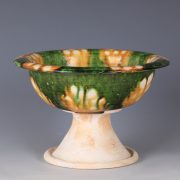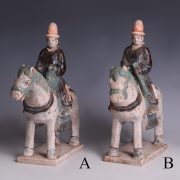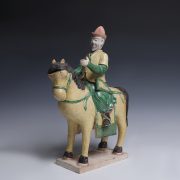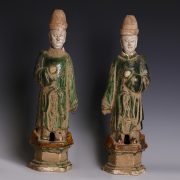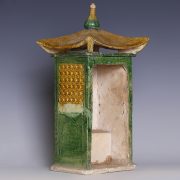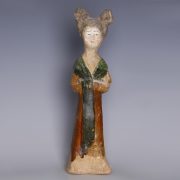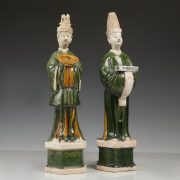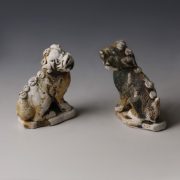Sancai Glaze
Sancai “three colours” refers to a style of Chinese ceramics typically of the Tang period tomb figures (of around 700 AD). Characteristic of the sancai style are the combination amber brown, green and cream with a flowing and streaky quality. The fluid glaze juxtaposed the finely sculpted forms onto which they were applied; court attendants, horses and camels were common figures to be placed in the tomb along with vessels made especially for the purpose and of a non-typical style of form that in some cases can be seen to take influence from ancient Greek pottery. Some of the examples of the hight of the style show an almost careless liberty with the application of the glaze. The tradition of these bold tomb figures lasted only approximately 70 years before the An Lushan Rebellion of 755 caused major disruption halting its production until a revival in the late Tang period.
Showing all 8 results
- View product
- View product
- View product
- View product
- View product
- View product
- View product
- View product
By continuing to use the site, you agree to the use of cookies. more information
The cookie settings on this website are set to "allow cookies" to give you the best browsing experience possible. If you continue to use this website without changing your cookie settings or you click "Accept" below then you are consenting to this.
